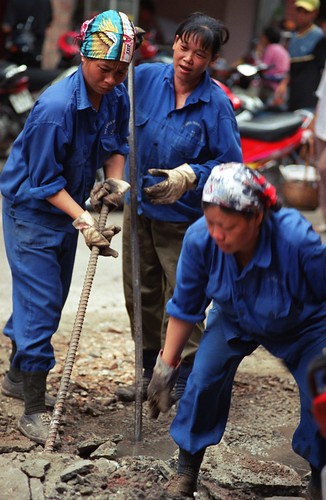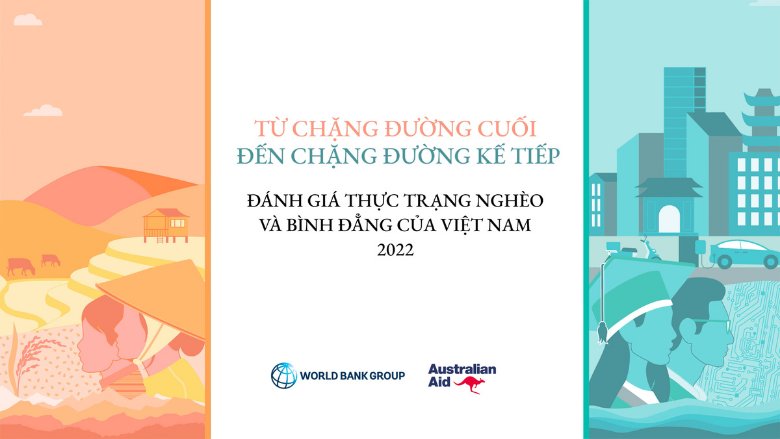The World Bank has been supporting Viet Nam since 1993 with $25,899 million in grants, concessional loans, and credits provided as of April 2025. The current portfolio consists of nine active projects, with a net commitment of $1.50 billion. In addition, Viet Nam benefits from a large and diverse portfolio of Advisory Services and Analytics (ASAs), 16 of which are currently being implemented, leveraging partnerships and trust funds from development partners.
Below are selected results from the World Bank’s engagement in Viet Nam, highlighting achievements across key sectors:
Clean Energy
With the support of the Viet Nam Transmission Efficiency Project (2015–21), the electricity grid in four economic hubs was significantly upgraded. The infrastructure improvements funded by the project increased transmission capacity by 15 percent and reduced the average operation and maintenance costs per megawatt hour transmitted by 20 percent. System reliability also improved dramatically, with the average fault duration slashed by 80 percent, from 76.2 minutes in 2013 to just 15.4 minutes in 2021. Beyond these immediate benefits, the project paved the way for a more sustainable future. By facilitating the integration of renewable energy sources on a larger scale, it helped reduce annual greenhouse gas emissions by an estimated 95,000 tons. The project’s smart grid component laid the groundwork for the digital transformation of the power sector.
Environment and Natural Resources
The Mekong Delta Integrated Climate Resilience and Sustainable Livelihoods Project (2016–24) helped more than a million farmers in the region transition to more climate-resilient and resource-efficient ways of living. The project leveraged an extensive network of scientists working with farmers to find new production models that best fit the agro-ecological and socioeconomic challenges and scale them up. It also created an enabling infrastructure network and improved regional cooperation on water and land management.
In March 2024, Viet Nam received the largest ever payment ($51.5 million) from the World Bank’s Forest Carbon Partnership Facility for verified forest emission reductions, benefitting over 1,300 communities and 70,000 forest guardians across six north-central provinces. The World Bank continues to support Viet Nam in distributing the payment to forest communities through benefit-sharing arrangements and in exploring opportunities to commercialize the excess emission reductions generated under this program.
Water Management
Building on the success of its predecessor, the Results-Based Scaling Up Rural Sanitation and Water Supply Program (2016–23) expanded access to clean water and sanitation for nearly 7 million people in Viet Nam’s 21 poorest provinces. Over 144,000 households gained access to sustainable water through 285,000 new or rehabilitated water connections, more than 69,000 households built improved sanitary latrines with program-facilitated financial support, and over 700 communes achieved commune-wide sanitation. Efforts to promote hygiene in nearly 450 communes ensured that schools and health clinics maintained proper hygiene standards.
Urban Development and Disaster Risk Management
The Can Tho Urban Development and Resilience Project (2016–24) helped protect 420,000 residents in the city’s urban core from severe flooding, which causes economic losses of almost $200 million a year. As the largest city in the Mekong River Delta, Can Tho plays a crucial role in the region’s transformation. The project built 14.2 kilometers (km) of flood defenses, upgraded 11.6 km of canals, and constructed 12 km of sewers. It built new roads and bridges spanning 10.4 km, connecting urban areas with safer zones. To enhance urban development and investment planning, the project combined infrastructure and digital systems such as the Flood Risk Management Information System and the Disaster Responsive Safety Net and Spatial Planning Platform, with co-financing from Switzerland State Secretariat for Economic Affairs. By blending technology with traditional approaches, the project established a robust defense against flooding, showcasing a sustainable model for urban development and bolstering resilience in Viet Nam.
Agriculture and Rural Development
With the support of the Viet Nam Sustainable Agriculture Transformation Project (2015–23) a triple win was achieved, raising farmers’ incomes, lowering their costs, and creating a greener future by cutting greenhouse gas emissions. Mekong Delta farmers working across 182,000 hectares reduced their use of inputs by up to 50 percent and boosted their profits by 30 percent. Their sustainable farming practices have helped cut approximately 1.5 million tons of CO2e emissions a year. Inspired by the project’s success, the Vietnamese government, in partnership with the World Bank, pledged to scale up the project to cover an additional 1 million hectares and reduce up to 10 million tons of CO2e in the Mekong Delta by 2030. In September 2024, the Transformative Carbon Asset Facility (TCAF) Board approved a proposal from the Ministry of Agriculture and Rural Development, committing up to $40 million for carbon purchases based on emission reductions under the “1 Million Hectare Low-Carbon Rice Program.”
Human Capital
Education
The Support for the Autonomous Higher Education Project (2017–23) significantly improved research capacity of four universities, fostering 278 new collaborations, reducing the number of students per lab workstation from 158 to 81, and helping 28 programs gain international accreditation. It also strengthened the national higher education system, by developing a management information system for 222 institutions and creating an e-Library that has handled over 2.7 million downloads.
Health
With the support of the Investing and Innovating for Grassroots Health Service Delivery Project (2020–24), the quality and use of grassroots health services in 13 provinces improved through the construction of 129 Commune Health Stations (CHSs) and the upgrading of another 332. More than 65 percent of CHSs now meet the national benchmark, up from a baseline of 40 percent. The project also enabled the management of approximately 800,000 patients with noncommunicable diseases, doubling the baseline number.
Social Protection and Jobs
The World Bank provides strategic advice to Viet Nam to address workforce challenges and support vulnerable populations. It contributed to the adoption of the amended Social Insurance Law in 2024 and offered insights on green jobs, as Viet Nam aims for 60 percent pension and contribution coverage by 2030 amidst rapid aging and high levels of informal employment.
Transport
With the support of the Local Road Asset Management Program (2016–24), the lives of over 11 million people across 51 provinces were improved. New and rehabilitated roads and bridges brought essential services closer to remote communities. Over 1,800 communes, home to Viet Nam’s most vulnerable populations, now benefit from reduced transport costs and improved access to schools, hospitals, and markets. This project marked a shift in Viet Nam’s transport asset management strategy from new construction to routine maintenance. Nearly 51,000 km of rural roads received regular upkeep, safeguarding them against deterioration and natural disasters.
Poverty Reduction
Viet Nam has reduced poverty and improved the quality of life for millions of its people. The World Bank has supported the country's efforts to address chronic last-mile challenges of eradicating poverty. In 2023, the poverty rate was less than 4 percent based on the World Bank lower-middle-income poverty line of $3.65 a day in 2017 purchasing power parity.
Last Updated: May 9, 2025






